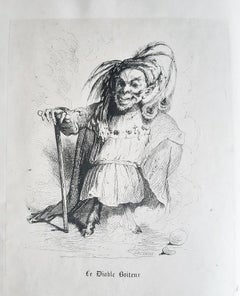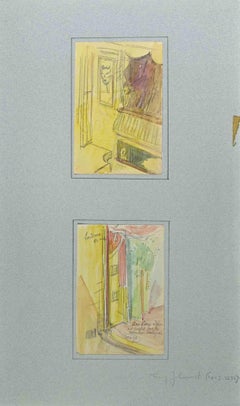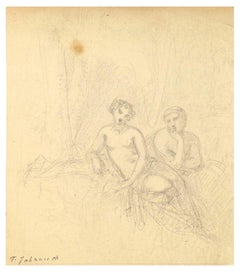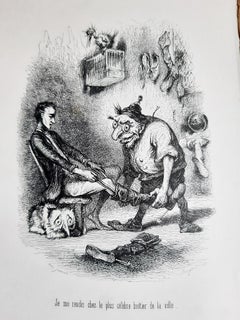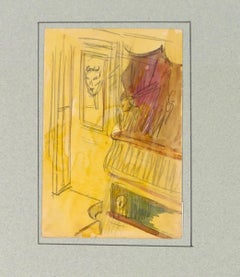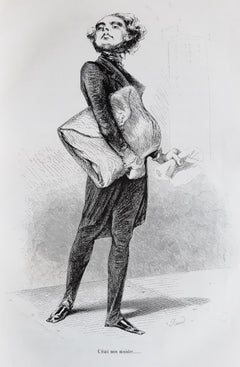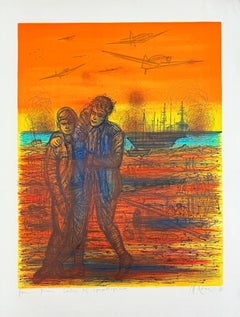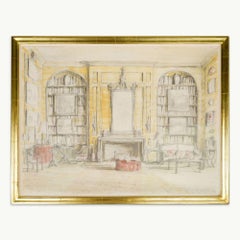Tony Johannot Art
Tony Johannot was a French engraver, illustrator and painter. Johannot learned engraving from his brothers and helped Alfred produce illustrations of books by James Fenimore Cooper and Walter Scott. Johannot came to prefer wood engraving but resumed etching in 1845. His historical paintings were exhibited at the Paris Salon for the first time in 1831. Johannot became an illustrator much prized for his elegance, his diversity and the lively character of his drawings.
1840s Modern Tony Johannot Art
Paper, Lithograph
Mid-20th Century Modern Tony Johannot Art
Pencil
Mid-19th Century Modern Tony Johannot Art
Pencil
1840s Modern Tony Johannot Art
Paper, Woodcut
19th Century Modern Tony Johannot Art
Watercolor, Pencil
1840s Modern Tony Johannot Art
Paper, Lithograph
Mid-19th Century Modern Tony Johannot Art
Watercolor, Pencil
19th Century Modern Tony Johannot Art
Pencil
19th Century Modern Tony Johannot Art
Pencil, Ink
19th Century Modern Tony Johannot Art
Pencil
19th Century Modern Tony Johannot Art
Woodcut
1960s Modern Tony Johannot Art
Lithograph
21st Century and Contemporary Tony Johannot Art
Paper, Watercolor, Pencil
21st Century and Contemporary Tony Johannot Art
Paper, Watercolor, Pencil
1950s American Modern Tony Johannot Art
Paper, Chalk, Pencil, Color Pencil
1960s Modern Tony Johannot Art
Lithograph
1960s Modern Tony Johannot Art
Lithograph
1930s American Modern Tony Johannot Art
Pencil
1980s American Modern Tony Johannot Art
Paper, Pencil
1920s Modern Tony Johannot Art
Lithograph
1920s Modern Tony Johannot Art
Lithograph
1970s Modern Tony Johannot Art
Graphite
1980s Contemporary Tony Johannot Art
Watercolor, Graphite, Paper, Mixed Media
